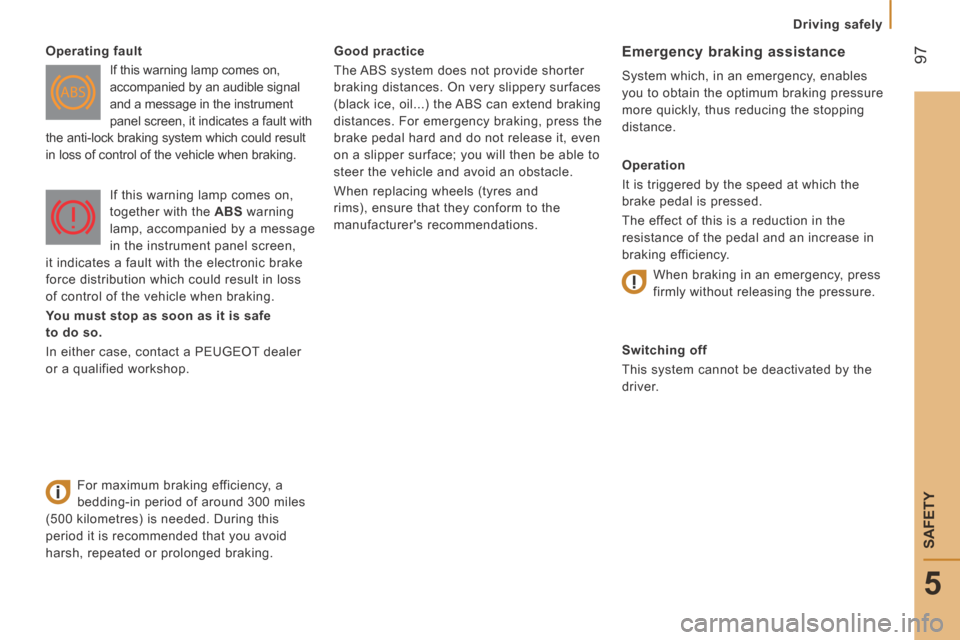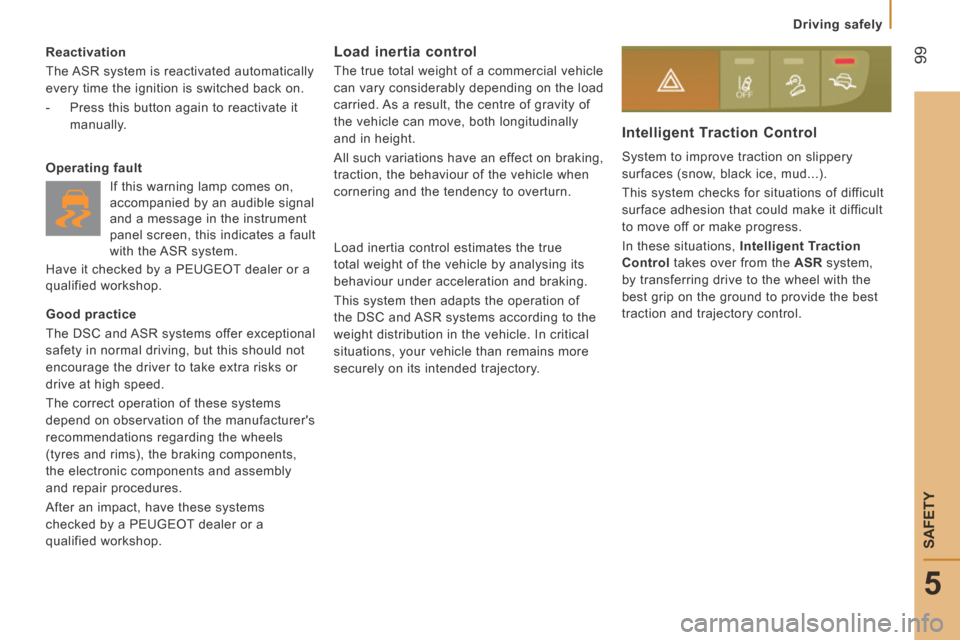Page 11 of 240
1
AT A GLANCE
9
Location
Seat belts 102-103
Airbags 105-107
Deactivating the passenger's
front airbag 106, 109
Parking brake,
handbrake 95 Front seats, adjustments 69-70
Seat with variable damping 70
2-seat bench 71
Tools, jack 75, 145
Child seats
108-111, 114-115 Rear view mirror
82
Lane departure warning
system 101 Cab courtesy lamp 78-79, 141
Changing a courtesy lamp bulb 141
Courtesy lamps 78-79, 141
12 volt socket 77 Battery (+), charging,
starting 131-133
Earth point (-)
123, 131
Fuses in the right hand door pillar 134, 136
INTERIOR
Load space 80-81
● stowing rings,
● load retainer,
● roof box,
● trims,
● 12 volt socket,
● courtesy lamp,
● inspection lamp.
Seats /
rear bench seats
72-73
Rear heating /
air conditioning 64-65
Reversing camera 92
Sliding side door
20
Sliding side windows 81
ISOFIX mountings 112-113
Crew cab 74
Accessories 119
Page 82 of 240
80
Practical information
LOAD SPACE FITTINGS Support for stowing rail
Supports for securing a stowing rail are
available above the trims, on each side of
the vehicle.
Maximum load: 200 kg.
12 volt socket
When used as a power socket: 180 W max. Lashing rings
Lashing rings are provided on the floor to
secure and make safe your loads: 8 for L1
and L2 length vehicles, 10 for L3 and
L4 length vehicles.
Two additional rings are located on the
partition behind the cab.
Maximum load: 500 kg.
Trims
The lower parts of the sides are fitted with
load protection trims.
As a safety precaution in case of sharp
braking, you are advised to place
heavy objects as far forwards towards the
cab as possible.
Page 99 of 240

97
5
Driving safely
SAFETY
Good practice
The ABS system does not provide shorter
braking distances. On very slippery surfaces
(black ice, oil...) the ABS can extend braking
distances. For emergency braking, press the
brake pedal hard and do not release it, even
on a slipper surface; you will then be able to
steer the vehicle and avoid an obstacle.
When replacing wheels (tyres and
rims), ensure that they conform to the
manufacturer's recommendations. Emergency braking assistance
System which, in an emergency, enables
you to obtain the optimum braking pressure
more quickly, thus reducing the stopping
distance.
Operation
It is triggered by the speed at which the
brake pedal is pressed.
The effect of this is a reduction in the
resistance of the pedal and an increase in
braking efficiency.
Switching off
This system cannot be deactivated by the
driver.
Operating fault
If this warning lamp comes on,
accompanied by an audible signal
and a message in the instrument
panel screen, it indicates a fault with
the anti-lock braking system which could result
in loss of control of the vehicle when braking.
For maximum braking efficiency, a
bedding-in period of around 300 miles
(500 kilometres) is needed. During this
period it is recommended that you avoid
harsh, repeated or prolonged braking. If this warning lamp comes on,
together with the
ABS warning
lamp, accompanied by a message
in the instrument panel screen,
it indicates a fault with the electronic brake
force distribution which could result in loss
of control of the vehicle when braking.
You must stop as soon as it is safe
to do so.
In either case, contact a PEUGEOT dealer
or a qualified workshop. When braking in an emergency, press
firmly without releasing the pressure.
Page 101 of 240

99
5
Driving safely
SAFETY
Reactivation
The ASR system is reactivated automatically
every time the ignition is switched back on.
- Press this button again to reactivate it manually.
Operating fault
If this warning lamp comes on,
accompanied by an audible signal
and a message in the instrument
panel screen, this indicates a fault
with the ASR system.
Have it checked by a PEUGEOT dealer or a
qualified workshop.
Good practice
The DSC and ASR systems offer exceptional
safety in normal driving, but this should not
encourage the driver to take extra risks or
drive at high speed.
The correct operation of these systems
depend on observation of the manufacturer's
recommendations regarding the wheels
(tyres and rims), the braking components,
the electronic components and assembly
and repair procedures.
After an impact, have these systems
checked by a PEUGEOT dealer or a
qualified workshop.
Intelligent Traction Control
System to improve traction on slippery
surfaces (snow, black ice, mud...) .
This system checks for situations of difficult
surface adhesion that could make it difficult
to move off or make progress.
In these situations, Intelligent Traction
Control takes over from the ASR system,
by transferring drive to the wheel with the
best grip on the ground to provide the best
traction and trajectory control.
Load inertia control
The true total weight of a commercial vehicle
can vary considerably depending on the load
carried. As a result, the centre of gravity of
the vehicle can move, both longitudinally
and in height.
All such variations have an effect on braking,
traction, the behaviour of the vehicle when
cornering and the tendency to overturn.
Load inertia control estimates the true
total weight of the vehicle by analysing its
behaviour under acceleration and braking.
This system then adapts the operation of
the DSC and ASR systems according to the
weight distribution in the vehicle. In critical
situations, your vehicle than remains more
securely on its intended trajectory.